
- Home
- Workshops / Tours
- Diary / Blog
- Galleries
- Foreign Trips
- Tasmania 2016
- NE Queensland 2016
- Western Alps 2016
- NE Spain 2016
- Australia's Wet Tropics 2015
- Australia's Top End 2015
- SW Australia 2015
- Switzerland 2015
- Andalucia 2015
- Belize 2015
- Australia 2014
- Switzerland 2014
- Belize 2014
- Bahama Islands 2014
- Switzerland 2013
- Ecuador 2012-2013
- Florida 2011-2012
- Vancouver Island 2011
- Australia 2010
- Peru 2008
- Bulgaria 2007
- Lesvos 2006
- California 2006
- New Zealand 2005
- Extremadura 2005
- Goa, India 2004
- The Gambia 2003
Ecuador
19th December 2012 - 20th January 2013
San Isidro
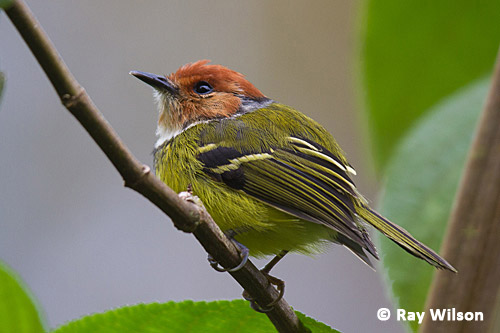
Rufous-crowned Tody-flycatcher (Poecilotriccus ruficeps)
San Isidro Lodge is situated at an approximate altitude of 2000m (about 800m lower than Guango Lodge) about an hour's drive further down the valley (about 2.5hours from Quito) and is another Bustamante family-owned eco-lodge and private reserve.
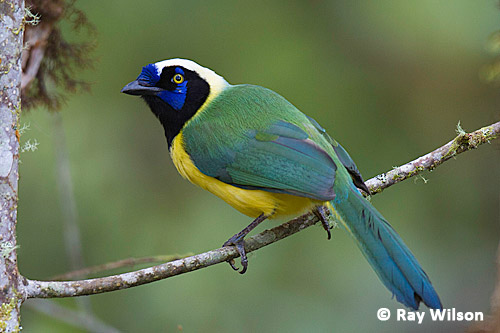
Inca Jay (Cyanocorax yncas)
Inca Jays are common at San Isidro and roving flocks can easily be found along the many trails around the lodge buildings.
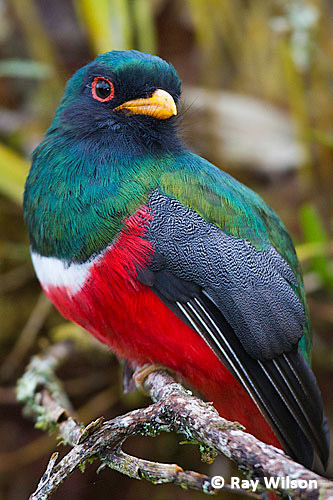
Male |
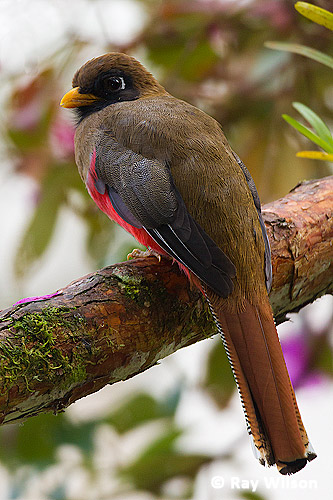
Female |
Masked Trogon (Trogon personatus)
Trogons are also easily observed here and are extremely approachable, often sitting posing for prolonged periods at very close range.
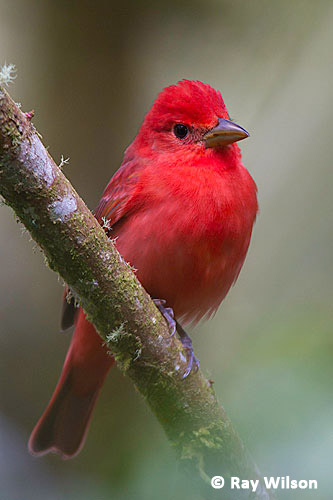
Summer Tanager (Piranga rubra) |
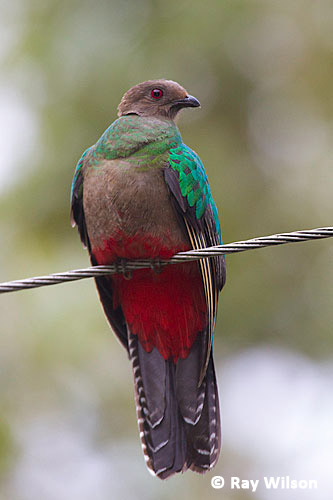
female Crested Quetzal (Pharomachrus antisianus) |
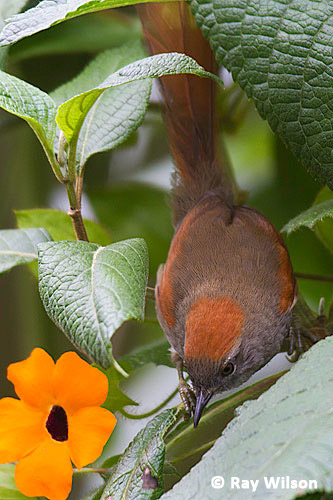
Azara's Spinetail (Synallaxis azarae) |
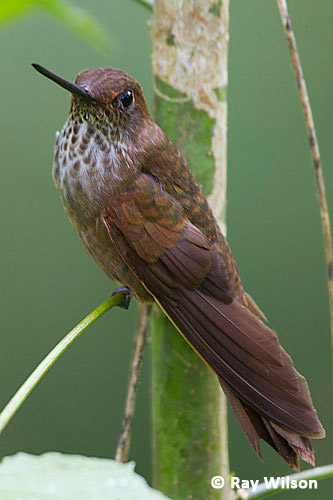
Bronzy Inca (Coelinga coelinga) |
At San Isidro there are currently two antpitta feeding stations, with White-bellied Antpitta and Chestnut-crowned Antpitta regularly visiting them each morning.
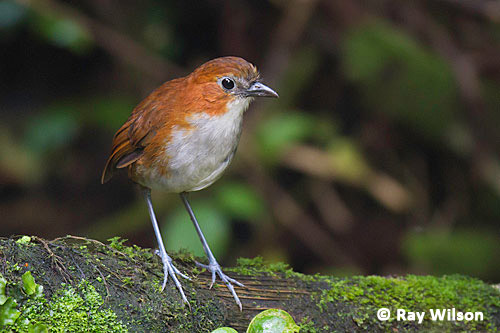
White-bellied Antpitta (Grallaria hypoleuca)
Most of our time at San Isidro was spent wandering the trails around the cabins.
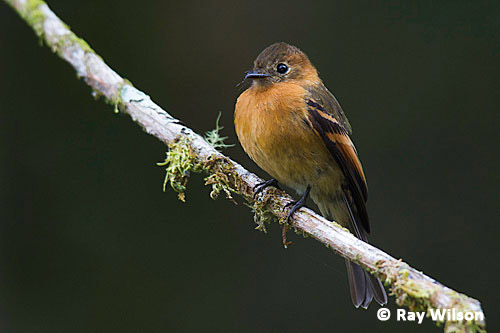
Cinnamon Flycatcher (Pyrrhomyias cinnamomea)
Two species of tyrant flycatcher that were much in evidence were Cinnamon Flycatcher and Pale-edged Flycatcher.
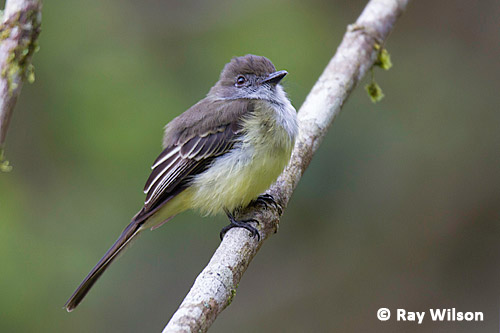
Pale-edged Flycatcher (Myiarchus cephalotes)
The San Isidro area is home to around 45 species of Tanager, many of which can be seen around the lodge.
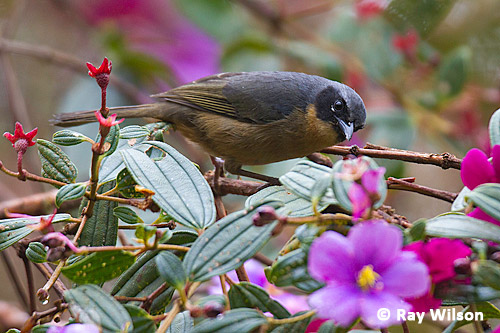
Black-eared Hemispingus (Hemispingus melanotis)
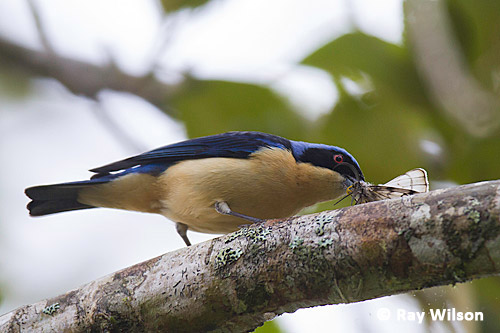
Fawn-breasted Tanager (Pipraeidea melanonota)
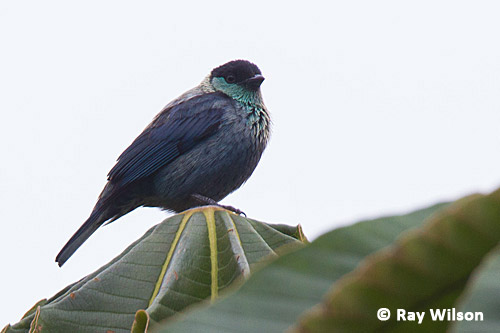
Black-capped Tanager (Tangara heinei)
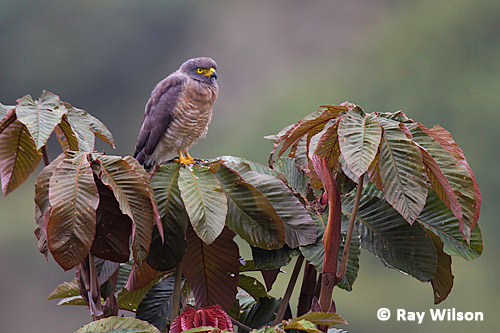
Roadside Hawk (Buteo magnirostris)
Roadside Hawk is one of the commonest raptors in Ecuador and they often perch conspicuously on top of Cecropia trees and prominent perches while they survey the surrounding area for prey.
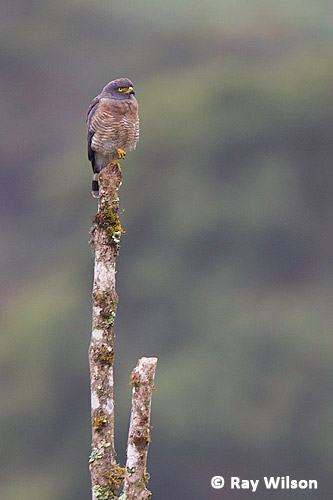
Roadside Hawk (Buteo magnirostris) |
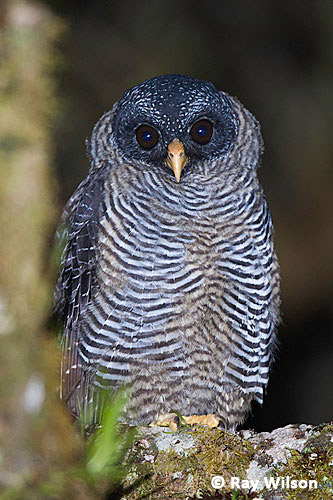
The San Isidro "Mystery Owl" |
There has been much debate as to the identity of the "Mystery Owl" which haunts the trees above the cabins at night. Some people even think it may be a new species since the Black-banded Owl is usually a lowland species and had never before been seen above 900m altitude. The "Mystery Owl" is indeed slightly different morphologically from Black-banded Owl in having broader white bands on its breast and belly than a typical Black-banded Owl. However, since Black-banded and the similar Black-and-white Owl of the lowland western slope of the Andes are already often considered conspecific, the "Mystery Owl" is, at most, likely to be considered a subspecies of Black-banded with the Black-and-white Owl probably being lumped in with them.

Photographing a Rufous-bellied Seedsnipe at an altitude of 4300m
On the way back to Quito we took a slight detour up to "The Antennas" to look for a high-altitude specialist: the Rufous-bellied Seedsnipe.
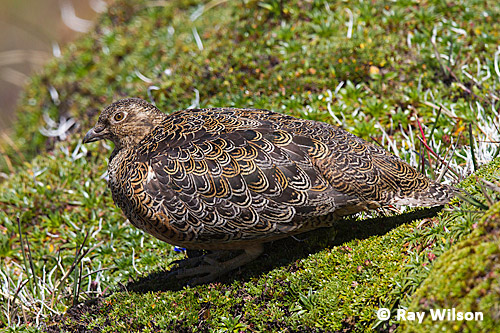
Rufous-bellied Seedsnipe (Attagis gayi)
| Guango Lodge | Sani Lodge |
Ray Wilson owns the copyright of all images on this site.
They may not be used or copied in any form without prior written permission.
raywilsonphotography@googlemail.com